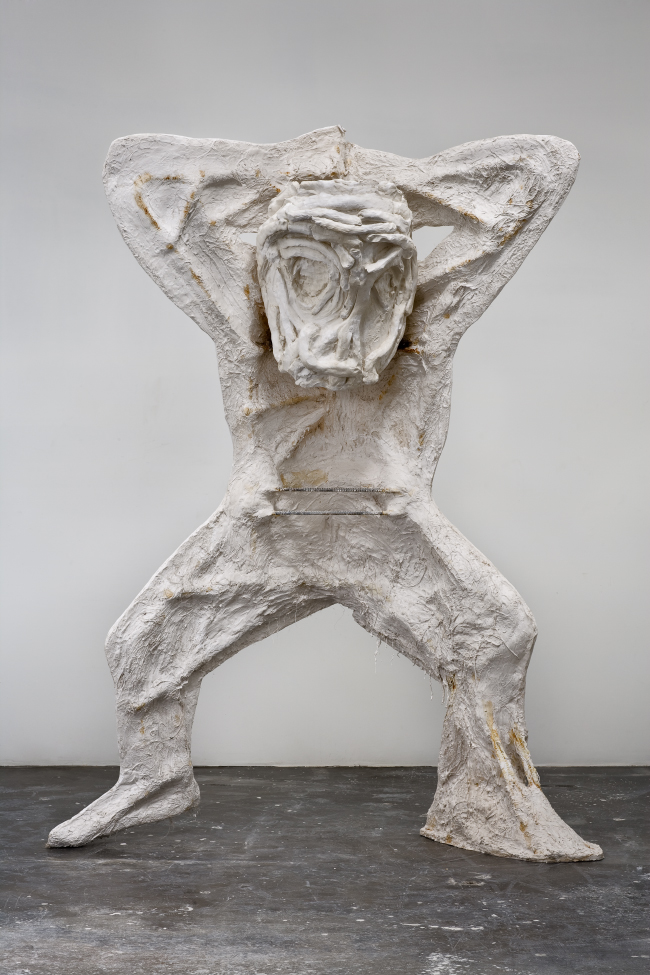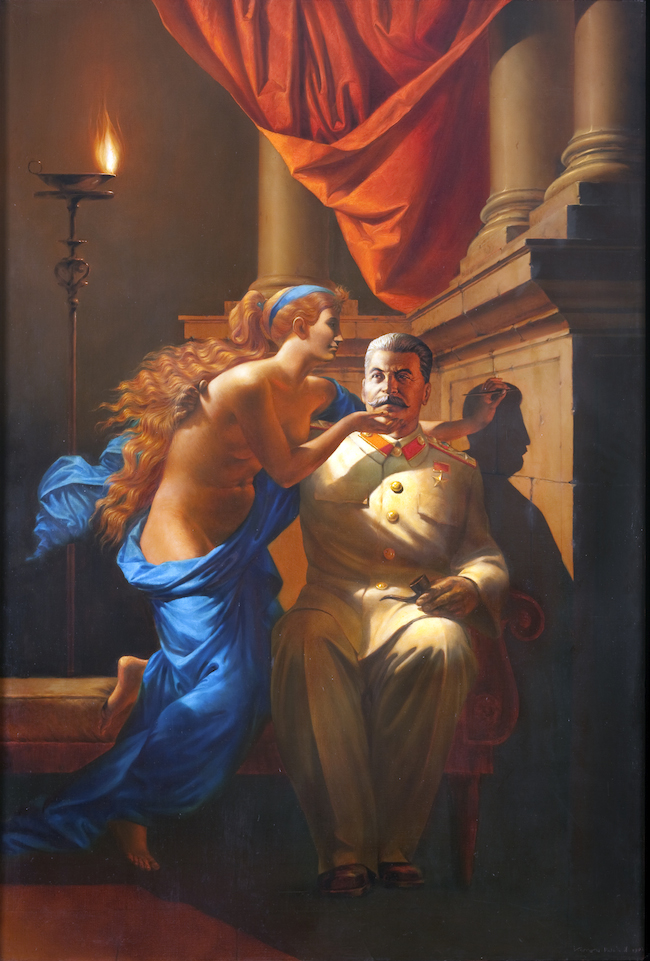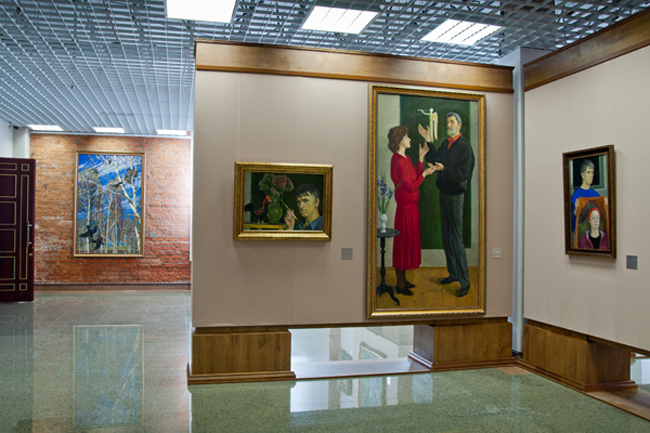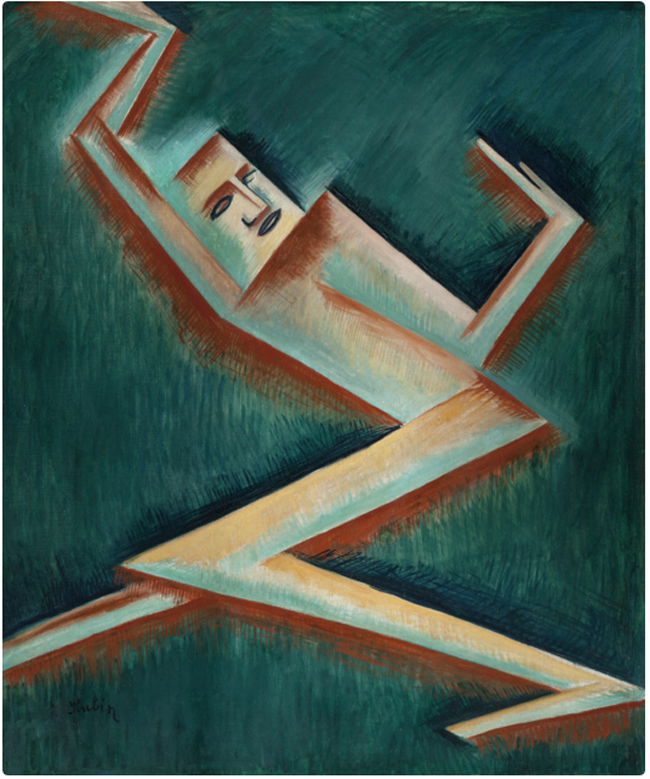
COLLECTION OF THE YEAR 2016
06/01/2017
Inspired by Sir Elton John’s excellent private collection of modernist photography (which can still be seen at London’s Tate Modern through May 2017), and by the much-discussed, salient phenomenon of David Bowie’s art collection, as well as the increasingly growing number of private collections that are being opened up to the general public, was curious to find out what our survey respondents thought about the collections that they discovered over the past year.

Thomas Houseago. Minotaur I, 2009. Courtesy the artist and gallery Xavier Hufkens. Servais Family Collection
Julien Robson, curator (Austria/ USA)
I have to admit, it is one I have yet to visit. I was excited to interview Patricia Vergez at viennacontemporary, and am looking forward to visiting the Vergez Collection, and its focus on installation, next time I am in Buenos Aires. Aside from this future aspiration, I enjoyed visiting a number of other collections during the year, including Alain Servais in Brussels, Timo Miettinen’s Salon Dahlmann in Berlin, and the Leal Rios Foundation in Lisbon. As well as the insight I gained into each collector’s motivations, these visits also helped me understand how each of them considers the ideas of an audience. (Read more about the above-mentioned collections in our interview with Julien Robson: What is sexier – to have your name on a building, or having a church in a restaurant?)

The origins of Socialist Realism by Vitaly Komar and Alexander Melamid. Courtesy of Zimmerli Art Museum. Norton and Nancy Dodge Collection of Nonconformist Art from the Soviet Union
Liisa Kaljula, curator (Estonia)
It´s definitely the Norton and Nancy Dodge Collection of Nonconformist Art from the Soviet Union at Rutgers University in New Jersey. A huge collection summoned by an American economist Norton Dodge in admiration for the courage of the artists of the former Eastern bloc. If Eastern Europe is lacking some necessary courage today, then one of the reasons might be that it has lost and forgotten its own cultural legacy that is rich and often bold and radical in its imagination. This forgotten courage also shows in the exhibition A Revolutionary Impulse: The Rise of the Russian Avant-Garde opened in MoMA (through 12 March, 2017).
Alise Tīfentāle, art historian (Latvia)
An excellent – unique and all-encompassing – collection on the history of photography, at the photography museum in the George Eastman House in Rochester, New York.
Sergei Khachaturov, art critic and curator (Russia)
The Maxim Boxer Collection, which focuses on Russian art of the ‘Silver Age’. The precious prints and paintings fill some of the empty pages in the Great History of Art.

Exposition of the Institute of Russian Realist Art. Photo: rusrealart.ru
Milena Orlova, art critic, Editor-in-Chief of The Art Newspaper Russia
I very much enjoyed the Paris Musée Jacquemart-André, based on a private collection of the Old Masters. I also simply must mention the new permanent exhibition of the Institute of Russian Realist Art in Moscow, a privately-owned museum open to the public. It is the collection of the Russian philanthropist Alexei Ananyev, who collects 20th-century Soviet and Russian paintings. The represented artists are not always aesthetically close to me; however, I find that the loving way in which the collector works with his holdings ‒ hiring the best exhibition designers, studying archive materials, presenting unknown facts from the biographies of the artists, ordering museum souvenirs and offering guiding tours ‒ deserves nothing but the greatest respect and admiration. Sadly, not all art collectors show their possessions to the public this way; often enough, the collections just lie around like a dead weight, bringing joy to no-one but their owners.
Michael Haagensen, curator (Estonia)
The private collection of Estonian collector Margus Punab.
David Kennedy-Cutler, artist (USA)
Every year, it is always the Cartin Collection, which is one of the most thoughtful and wide-ranging collections of obsessional art and books. Cartin, who was a philosophy student before he went into business, mashes up Sol LeWitt, outsider artists, eccentric portraiture, Joesph Albers, Charles LeDray, Joe Coleman, Agnes Martin, Alfred Jensen (and many more obsessional artists) along with illuminated manuscripts and early printing examples, into a cohesive vision.

Otakar Kubín (Othon Coubine). Figure II, 1912–1914. Collection of the National Gallery in Prague. Photo: ngprague.cz
Kaspars Groševs, artist (Latvia)
The 20th-century art collection at the Prague National Gallery was a pleasant surprise – works by Warhol, Beuys, Kokoschka, and other masters have been just randomly put out on display, with some Czech gems interspersed here and there. It seems that the best way to support national art is to simultaneously look at it in a global context, thereby preventing it from getting stuck in the bog of provincialism. It’s probably to late for us in Latvia to buy a Picasso, however, it certainly isn’t too late to use a discerning eye to put together a collection in which contemporary artworks of differing provenance can peacefully cohabit.
Bo Nilsson, Artistic Director of Artipelag (Sweden)
Sammlung Feuerle, Berlin.

Kristaps Ģelzis. Bedtime Story, 2008. Latvian National Museum of Art, Latvian Museum of Contemporary Art Collection
Francisco Martínez, anthropologist (Spain/Estonia)
In the exhibition “Light end. Latvian art in the digital age”, curated by Helena Demakova, I discovered some of the artworks that have been gathered over a decade for a yet-to-be-built Latvian Museum of Contemporary Art. The works exhibited belonged to the state and to a private collector (ABLV bank).

Exposition view. Poor Art – Rich Legacy. Arte Povera and Parallel Practices 1968–2015
Brigita Reinert, art theorist, critic, and editor (Estonia)
The collection of Oslo’s Museum of Contemporary Art (which is part of The National Museum) was a great surprise. There was this exhibition called “Poor Art – Rich Legacy. Arte Povera and Parallel Practices 1968–2015”, which presented works from the collection, and concentrated on the arte povera movement, which is central to the museum’s collecting policy. The museum’s collection started out with 2,500 works from the period after 1945 that were transferred from the National Gallery and Riksgalleriet (the traveling art gallery of Norway). The initial set of works the museum inherited represented the official narrative of post-war Norwegian art history and select international artworks. It now contains more than 5,000 items by Norwegian and international artists. The museum’s permanent installations were also part of the exhibition: Per Inge Bjørlo’s installation “Inner Room V”, Ilya Kabakov’s installation “Garbage Man (The Man Who Never Threw Anything Away)”, and Louise Bourgeois’ “Cell VIII”.